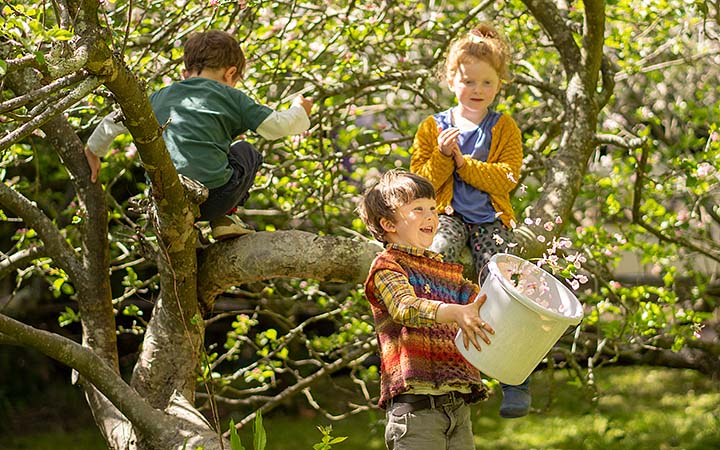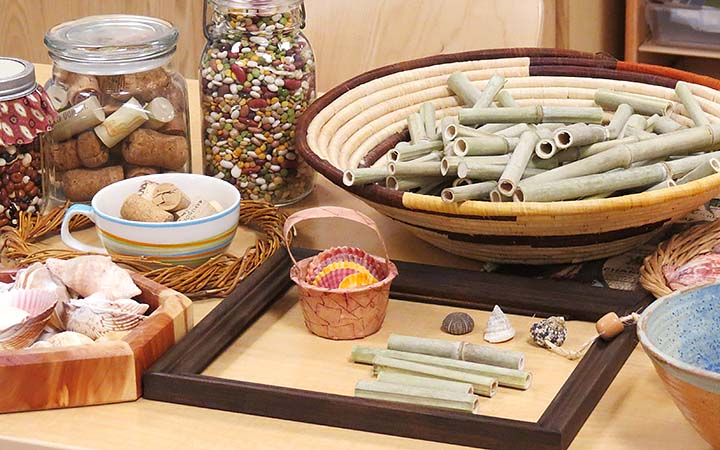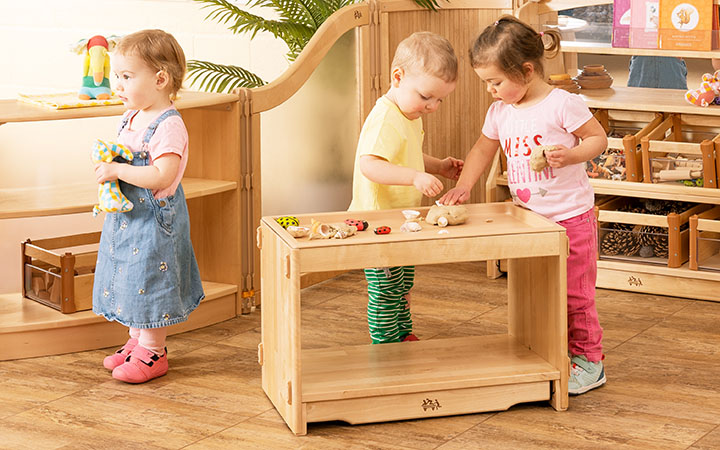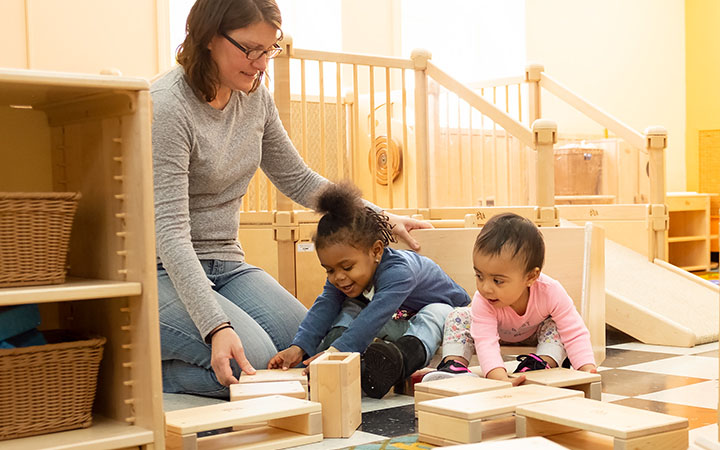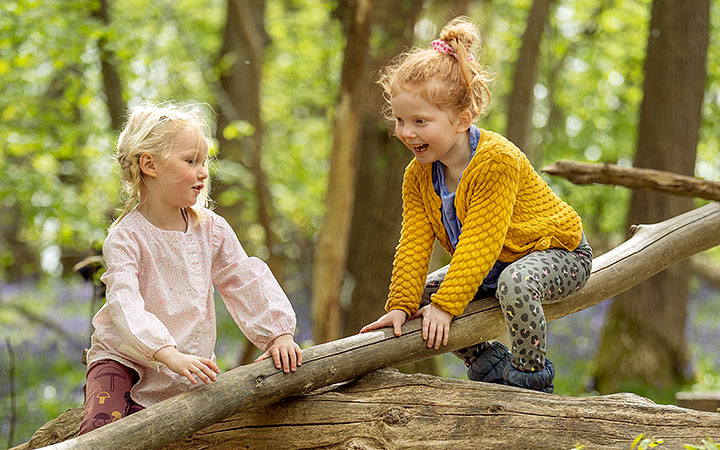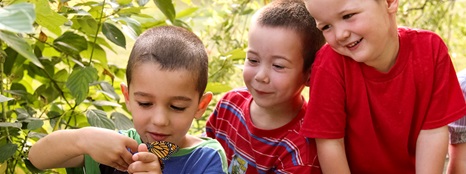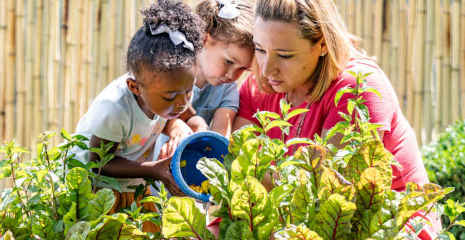What is open-ended play?
Building the foundations for learning in the early years
| May 2023If you’re concerned about whether open-ended play still has a place in our children's busy lives, consider this: it’s an approach that can be applied anywhere, and the benefits will last them a lifetime. Rather than an isolated activity, open-ended play is the ideal form of child-led learning and can be incorporated into every space. As you consider the various environments where your children learn and play, here are some thoughts that may help you to enhance and enrich their experiences.
What is play?
Play is not just recreation for children – it’s their approach to life! Every action they take engages their mind, body, and spirit. Play is essential for children’s well-being as it enables them to explore the world, express themselves, and cope with challenges.
As Jean Piaget stated, “Play is the important work of childhood.” This sentiment resonates across the Early Years Foundation Stage (EYFS), because nothing stimulates brain development and imagination quite like play. Engaging all five senses, play absorbs children in activity, developing confidence and independence.
Though children’s play appears spontaneous, it’s complex and diverse. One type that prevails across cultures is open-ended play, where children dictate what they play, how, and with which materials. Open-ended means “allowing for future change; not having a fixed method or prescribed outcome”. Freed from the fear of failure, children become immersed in deep play. For adults, observing this type of open-ended play can offer unique insights into children’s rich thinking.
Materials for play
When it comes to materials, children perceive the world differently from adults. Humble everyday items such as a sheet hanging out to dry can have infinite possibilities. Children need materials and opportunities to apply their own logic. The best resources for open-ended play are often simple and ambiguous. They won’t come in an attractive subscription kit pushed through your post-box by enterprising profiteers. In an insta-perfect world, the pressure to have a good-looking result can take all the fun out of the process. The joy – and all the learning – is in the journey, and the value is not in the materials but in the play and creativity they inspire.
According to Margaret McMillan, “Most of the best opportunities for achievement lie in the domain of free play, with access to varied materials.” These materials need not be complicated or fancy. Sophisticated resources tend to thwart true play; children often become bored with prescribed games or mesmerized by electronic paraphernalia.
Where detail is built in, children’s ideas cannot freely guide the play. Elaborate costumes for every TV character usurp a child’s imagination. Old hats, shoes, handbags, and fabric pieces will serve the drama corner richly and set the scene for deconstructed role-play. With a tea cosy and a stick, a child can be a firefighter now and conduct an orchestra later.
Home corners are often supplied with artificial fruit and veg, but a plastic lemon can never be anything but a lemon. Open-ended materials such as sand, dough, clay, acorns, corks, lids, mud, and scraps of cloth become anything a child envisions. The simpler the props, the more versatile they are, supporting play that is sustained over time.
Play needs time
Although open-ended play is time-consuming, every second of it is worthwhile. Children who have always been told what to do, or are lamentably labelled “iPad kids”, may need time to get involved in open-ended play. Allow them that time, free of pressure. As they observe other children spontaneously engaged, they will gradually be drawn into the action. All children have latent curiosity and imagination; once these are stimulated, each experience suggests another. Ideas multiply, confidence grows, and creative play becomes self-perpetuating.
Even children who are familiar with open-ended play need lots of time to experiment, discover, create and re-create. Children live in their play; the more engrossed they are, the more frustrating interruptions become. Considering all the satisfaction and learning it engenders, open-ended play warrants the longest possible periods.
The teacher’s role in play
Observation is at the heart of effective early years practice. Children provide insights into their understanding as they set goals, negotiate, and experiment. The unfiltered emotions and conversations generated by free play hold the keys for assessing development.
Listening in as children think aloud during block play or small-world play allows teachers to enhance or extend the activity. Observing a child’s journey, the teacher sprinkles subtle prompts like fairy dust, introducing new materials or concepts through open questions. Some children may not have experienced open-ended play or been actively “taught” not to use things other than for their intended purpose. By modelling creative behaviours teachers can inspire a more imaginative approach. How do children know they are allowed to use the cardboard box for lots of different purposes until they see their key worker wearing it as a hat?
An indispensable part of children’s play is the presence of a trusted practitioner to whom they can turn with difficulties, or share the joy of discovery. Being both inconspicuous and available, knowing when to guide and when to unobtrusively observe, is the educator’s genius.
Outdoor play
The mess is worth it. To live a creative life, we must lose our fear of being wrong; also our fear of making a mess. One great antidote to the torment of tidy-up is outdoor play.
Nature has a forgiving attitude toward mess. It provides endless scope for open-ended play and fosters emotional well-being. Children’s favourite climbing frames are trees, boulders and logs, which through imagination become mountains, horses, fishing boats, castles and fire engines. The freedom of the outdoors encourages expansive movement and promotes health.
Water in any form is tremendously attractive. Even without a stream, children discover rainwater in puddles or hollow stumps to splash. They love mixing magic potions with twigs, leaves and flower petals.
Forest and beach schools have access to a wide variety of children’s “treasures”: fir cones and conkers, or pebbles and seashells. Under the roots of trees, they set up playgrounds for pixies and leprechauns, or tiny flats with moss cushions and seedpod dishes. And everyone has seen sand castles at the beach decorated with bottle caps, seashells and bits of glass, or in the sandpit adorned with daisies and buttercups. When children create these small worlds, they are the “big people” controlling what happens.
The great outdoors is the place where taking risks gives rise to problem-solving, and trial and error inspire creativity.

